Massey Ferguson’s ‘8’ line tractors in the spotlight
Posted by Chris Graham on 3rd November 2022
Jonathan Whitlam profiles Massey Ferguson’s ‘8’ line tractors, classics otherwise known as the Super-Spec range.
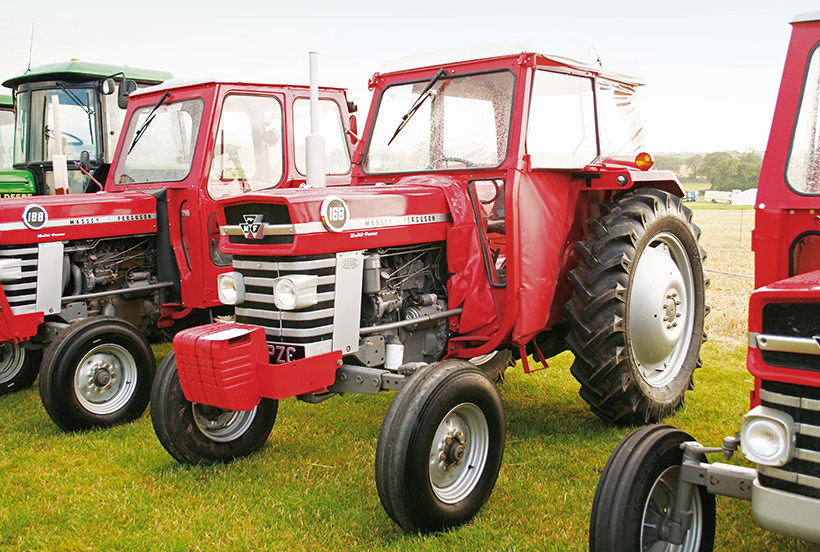
First appearing on farms in 1972, the Massey Ferguson 100 Series ‘8’ line comprised three tractors that built on the success of the original versions. The 168 was the mid-range model of the new trio.
When Massey Ferguson launched the 100 Series, otherwise known as the Red Giants, in 1964, the range quickly became an unqualified success. Three British-built models were included in the 100 Series for the UK market – 135, 165 and 175 – as well as the French-built 130. Other models featured according to each market.
The 130 was powered by a four-cylinder engine, while the 135 had a three-cylinder Perkins unit and the 165 and 175 a four-cylinder Perkins diesel. Petrol variants were also offered, but were nowhere near as successful as the diesel versions.
Transmission wise, the standard set-up was a six-speed gearbox – the still advanced Multi-Power system also being available as an extra cost option offering 12 speeds via a high and low splitter in each main gear ratio, with change-on-the-move ability.
Various updates and changes would be made to these initial models as the years passed by. The 130 was soon deleted, at least in Britain, while the 165 saw a MkII version arrive with more power – now having 60hp under the bonnet for 1968. In the same year, the rather underperforming 175 was replaced by the more powerful, 72½hp 178 model, giving this member of the family a much-needed boost in power output.
Mechanical improvements were also made and the very handsome, but rather impractical in some respects, Duple-built weather cab was replaced in 1970 when UK legislation required safety cabs to be fitted to new tractors. Flat-topped mudguards soon became standard across the range to accommodate the fitting of such cabs, of which MF offered two types, both consisting of a metal safety frame complete with windscreen and roof, which was then available with either rigid cladding or canvas cladding – the latter being much cheaper and often chosen by cost-conscious farmers.
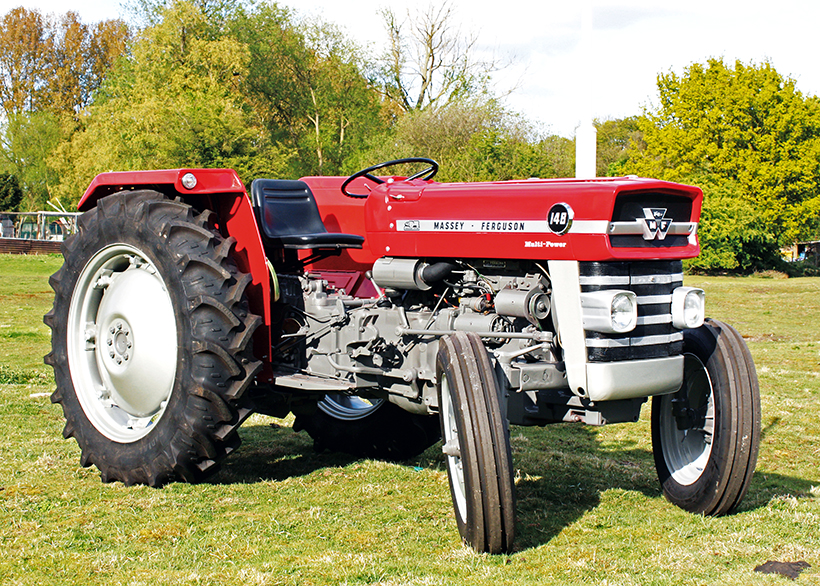
A restored example of the 148, which was based on the existing 135. Due to the safety cab legislation brought in during 1970, this tractor would have been fitted with a safety cab from new.
The use of 178 as a model number probably seemed a sensible one when it was introduced in 1968, as it was an upgraded 175, but the 178 would only survive a short time because a whole new range of 100 Series tractors introduced at the end of 1971 to go on sale in 1972.
The ‘8’ line
The whole Red Giants range was duly revamped in 1971, with all models receiving some changes, albeit often small ones. The 135 and 165 were both still present, but the 178 had now disappeared in favour of a new, Perkins A4.248-powered, 71hp (DIN) 185 model.
The name change for the 178 had become necessary as a whole new family of models was also introduced in 1971 in the shape of the new ‘8’ line. These looked like the existing tractors but featured a longer wheelbase and were frequently advertised by Massey Ferguson as the ‘deluxe’ Red Giants, or the ‘Super-Spec’ line.
Apart from their extra length the new tractors looked pretty much identical to the originals, but the model numbers were now the 148, 168 and 188, reflecting the fact that, as well as increased power ratings, these new machines featured an eight-speed transmission option as well as the 12-speed Multi-Power.
Big-hearted 148
The 135 was part of the original launch of the Red Giants, back in 1964, and was very successful in all the markets it was sold into, being built in both North America, France and in Coventry here in the UK. Despite being offered with a petrol engine, the vast majority sold in the UK were fitted with a three-cylinder Perkins diesel engine producing 45½hp. Many different versions of the 135 were produced, including narrow tractors.
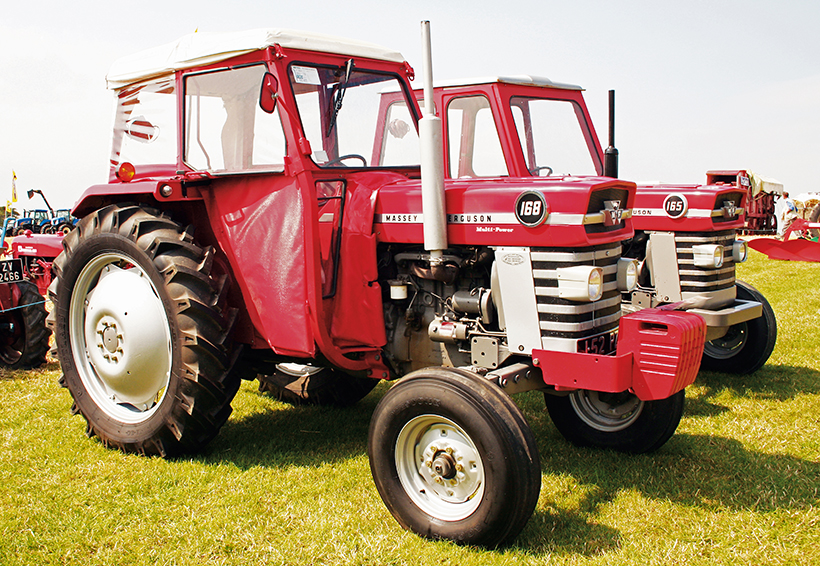
With 69hp on tap, the 168 made a more powerful alternative to the popular 165 model. As was often the case, the doors to the flexible-clad safety cab have been removed for extra ventilation!
From a distance, the new 148 was identical to the 135 and indeed it did share most of its components with the older model. It was built in both the Beauvais factory, in France, and in Coventry and at first glance could have been taken for a 135 with a different badge. Externally it was possible to tell that the 148 had a longer wheelbase than the 135, but really only if the two were parked beside each other. Under the skin however, there were many differences that gave the 148 its Super-Spec moniker.
The engine used was actually the same Perkins three-cylinder AD3.152 powerplant as used in the 135, although constructed with a different cylinder head as well as different fuel injection equipment that allowed for a slightly higher power output of 49hp over the 135’s 45½hp.
The big deal though was naturally the adoption of an eight-speed transmission. Multi-Power was a standard fitment, using the already proven 12-speed ’box used on the 135 and others in the original range, but the optional eight-speed gearbox gave a very good spread of gears and high and low ranges without the added complexity of Multi-Power, and this found favour with many farmers who could not see the justification for a change-on-the-move system.
Round at the back of the 148, many components were strengthened – including the whole of the rear axle, as well as linkage components themselves, so that the tractor could more comfortably and reliably cope with heavier implements. This also increased the weight of the tractor slightly and no doubt helped with tractive effort.
Despite its extra power and abilities, the 148 never caught on with farmers to anywhere near the extent of the popular 135, which is a shame as it was a very competent tractor.
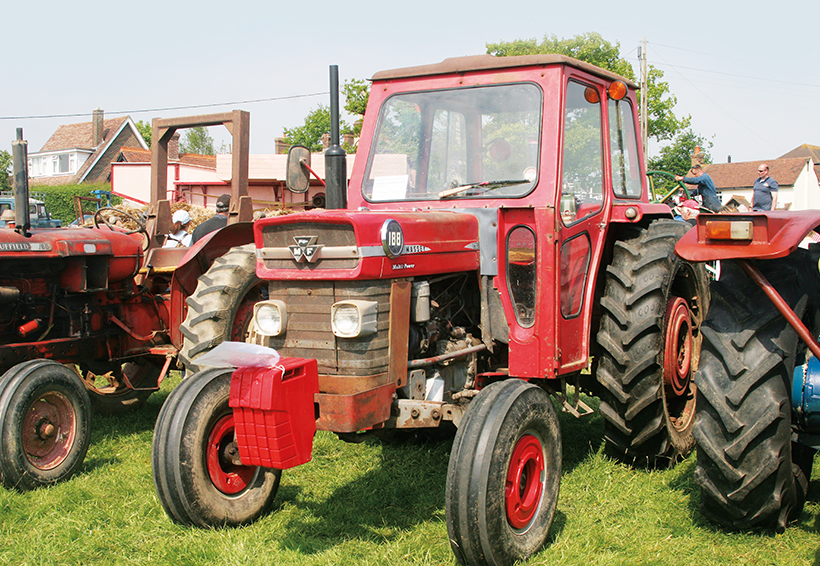
When fitted with the rigid-clad cab, the 188 certainly lived up to its flagship status. With 75hp available this was a fitting rival to the Ford 5000 of the same power output.
Mid-range 168
The 165 had, like the 135, been among the best-selling tractors since its introduction in 1964 and had also undergone a few changes and upgrades by the time it was joined by the 168. Although the new 168 was the ‘8’ line version of the 165, the new tractor was rather different than the makeover that turned the 135 into the 148.
This was because the engine chosen for the 168 was not the same as that used in its older 165 sister, instead it used the Perkins four-cylinder A4.236 engine that had originally powered the 175 – this time with a rated output of 69hp. This meant that power output was considerably more than the 62hp 165 and, as the 168 was not the largest model, the problem encountered back in 1964 with the 175 seeming underpowered in comparison with the competition, was avoided.
Two transmission options were offered. The 12-speed Multi-Power gearbox was standard, while the eight-speed unit was optional. The dual clutch was standard, as was the six-inch spacer in the transmission.
It could be said that the 168 was often overlooked by prospective purchasers, many preferring the cheaper, but less powerful 165 which, by the early 1970s, had become something of an icon in itself. Plus, where more power was required most farmers opted for the 185, which was not a whole lot dearer than a ‘fully loaded’ 168.
Top-of-the-range 188
As the Super-Spec version of the 185, the 188 was the flagship of the 100 Series line-up. Unlike the 168, the 188 had more in common with its sister, the 185, by virtue of sharing the same four-cylinder Perkins A4.248 engine, rated at 75hp. Specification was the same as the 168 and, of course, it shared the spacer giving an additional six inches of wheelbase. However, linkage’s lift capacity had been increased by 250kg over the 185, thanks to a slightly revised hitch layout.
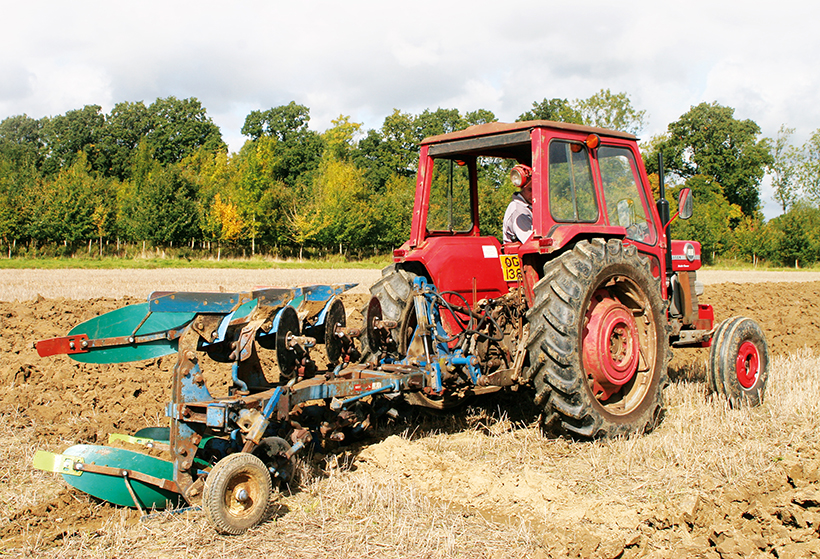
A Ransomes three-furrow reversible plough proves no issue for the flagship of the ‘8’ line. With plenty of power and a static lift force of 4,600lb (2,064kg) with the lower links horizontal, an implement like this was well within the tractor’s capabilities. Photo: Kim Parks.
In France Massey Ferguson produced a four-wheel drive version of the 188, and although 100 Series models had been converted to four-wheel drive machines by different manufacturers in various countries, including Four Wheel Traction Ltd. in the UK, Massey Ferguson had shied away from offering its own four-wheel drive versions until now.
As the flagship of the range, the 188 became the best-selling of all three of the new ‘8’ line models, as most farmers that were willing to pay for what was seen at the time as a large machine, often went the extra mile to obtain the ‘top dog’ rather than the cheaper, but less glamourous, 185. I’m sure the extra features also came in handy too, of course!
Five years later
The ‘8’ line models had been moderately successful. They had sold well enough, but not in huge numbers, especially the 148 model which suffered due to the fact it ended up as not that much cheaper than the 165, which was a larger machine with much more potential. Frugal buyers then decided to forego the benefits of the 148 in favour of a standard, no-frills 165.
Taking a look at the official MF production figures for the 100 Series proves the point. Out of the ‘8’ line range, the 188 was by far the most popular – selling nearly double the number of units than either the 168 or 148 individually. The 168 came next in terms of numbers produced, but the 148 was not far behind. The facts really speak for themselves though, when you compare the ‘8’ line production figures with the older ‘5’ line models. Now, when it comes to the 135 and 165, these models were in production for longer than the 148 and 168, so the earlier models will have higher production numbers, but even taking that into account the numbers are very revealing.
The 135 sold more than 241,000 units more than the 148 and the 165 sold more than 160,000 units than the 168. The 185 and 188 comparison is a fairer one, as the two tractor models were built for a similar length of time, but the trend is the same with the 185 selling close to 19,000 more units than the 188. This shows that the ‘8’ line range was not the huge success that MF might have thought it was going to be, although taken together a total of 43,488 ‘8’ line tractors rolled off production lines, which is not an inconsiderable feat.
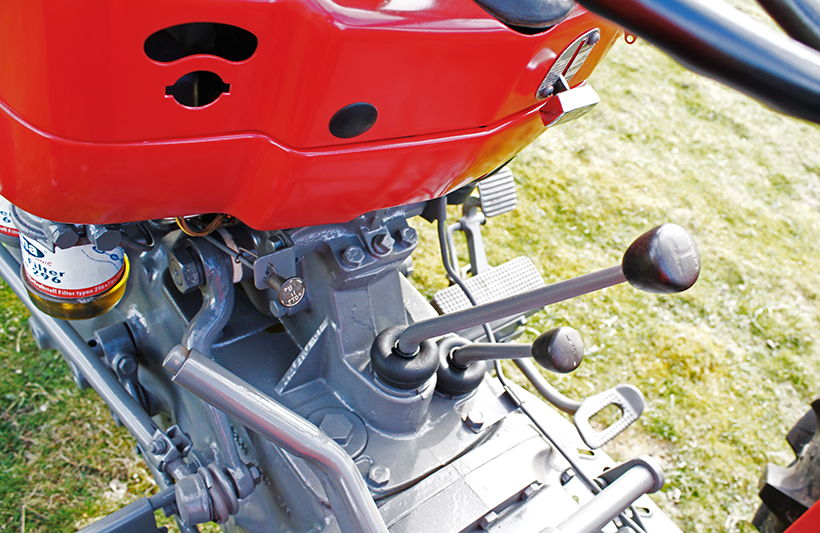
The transmission was controlled by two levers which were to be found on all the variants of the ‘8’ line.
By 1976 it was obvious that the reign of the Red Giants was coming to an end. The ‘8’ line may have only been in production a relatively short time, but the world was moving on and the main issue facing all tractor manufacturers was the impeding quiet cab legislation that was then coming into force; Britain bringing in a noise limit in the cab during 1976. That limit was low enough that manufacturers had to either start off on the drawing board with a completely new cab design from the ground up, or buy in cabs from an outside supplier.
The old safety cab that had been fitted to the 100 Series since 1970 had done the job prior to this, and the canvas-clad variant, in particular, is seen as iconic amongst those who remember the farming scene during the 1970s and 1980s. Looking back it is amazing that a leading manufacturer could offer such a simple cab, but it did the job it was intended for, thanks to its rigid safety frame, and many older tractor drivers at the time had been used to no cab at all, so a few draughts did not cause any concerns.
The rigid clad cab was obviously a better option in terms of comfort, but was less often specified due to its extra cost and also came with the problem of excessive noise which seemed to be much louder in these cabs than the still very noisy environment inside the canvas-clad type! However, the rigid-clad cab did also come with a rear-view mirror and ear defenders!
Massey Ferguson decided to design its own cab that could be fitted to a new range of tractors to replace the Red Giants, and the prototype for these, the 595, had been about since 1974. 1976 saw the rest of the 500 Series arrive, replacing the whole Red Giants range, except for niche models such as the 135 fitted with a Quick Detach cab.
Despite the 500 Series being new in terms of aesthetics, the mechanical specification bore much more of a resemblance to the old ‘8’ line models than anything else and can be seen as a direct evolution from the 148, 168 and 188.
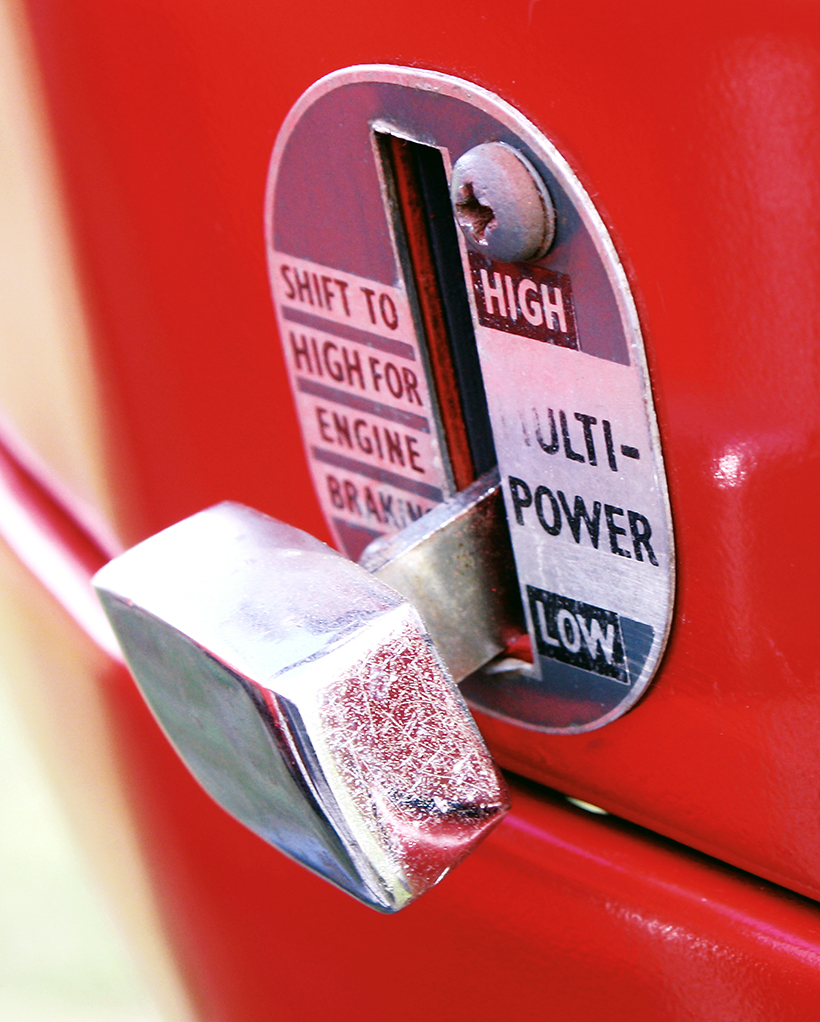
This examples six forward speeds and two reverse are doubled by the Multi-Power lever on the dash panel.
50 years on
Production of the new ‘8’ line tractors began in late 1971 and so it was 50 years ago, in 1972, that they began arriving on farms around the world. The introduction of this additional line-up of tractors was a logical one for Massey Ferguson and it had the desired effect of making a basic, three-model line-up into a six-model offering – taking aside other members of the ‘extended’ family such as the 140 and the 1080.
In the UK MF was locked in a continual battle with its main competitor, Ford, and the two were always first or second in the tractor sales leader board during the 1960s and ’70s. In 1972 that meant MF could offer more models in the important 40-80hp bracket than Ford, the latter still enjoying huge success with its 1000 Series range that had evolved from the original machines introduced in 1964 at the same time as the Red Giants made their debut. The addition of the new MF tractors meant that the Massey Ferguson salesmen could offer much more choice to their customers with the full complement of six models compared to Ford’s three in the same power bracket. This must have been a good marketing tool.
In the end though, the ‘8’ line tractors were never as popular as their ‘5’ line brethren and despite offering a lot more comfort, amongst other features, farmers often decided to buy the cheaper and already tried-and-tested 135 and 165. Those who did branch out and purchase a 148, 168 or 188 were certainly not left disappointed as driver reaction to these machines was always excellent and they really were the deluxe machines in the MF line-up.
It seems that those who drove an example of the ‘8’ line always had good things to say about it and that probably stems from the extra length. With the spacer fitted to the ‘8’ line tractors behind the gearbox casing, the increase of six inches in length was useful – giving much better stability and also better access to and from the cab thanks to extra leg room, a feature that helped to define the range as a luxury alternative to the standard ‘5’ line machines and justify the extra cost to some prospective purchasers.
Today the ‘8’ line tractors from Massey Ferguson are not as easy to find as they once were, with limited production compared to the original models and many years of strong export sales, only a small population of these tractors remains in Britain. Most of these are now in the hands of collectors, so that means at least we get to see some of them at shows ploughing matches and working events.
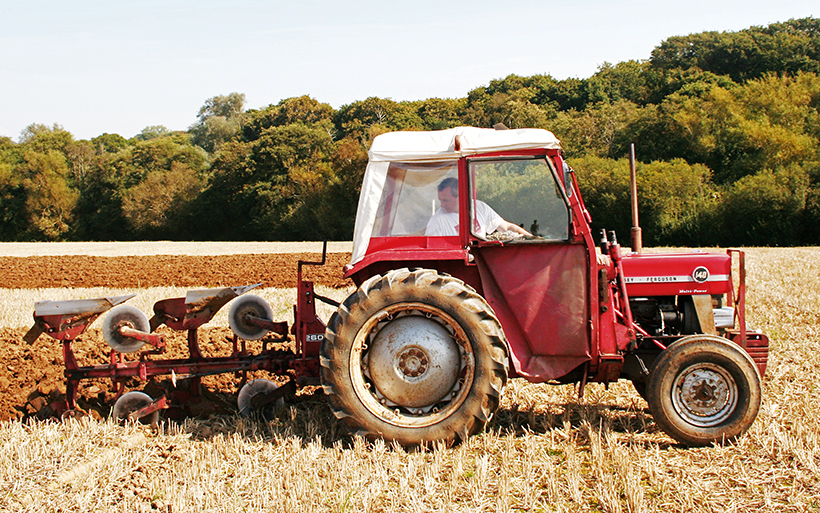
This very original example of the 148 is still fitted with its canvas-clad safety cab that was fitted at the factory when new. The presence of a loader frame is also visible on this example, which is pulling an MF 260 reversible plough, designed by Huard. (Pic: Kim Parks)
To me, the memory of these machines will be forever epitomised by the flexible-clad tractors I used to see working locally back in the 1980s, and although most were 135 and 165 models, I do remember a particular 188 that even at an early age I recognised as something a bit special. Half a decade on and it is certainly good to look back on these tractors that were produced throughout almost the entire span of the 1970s.
This article comes from the latest issue of Tractor & Machinery, and you can get a money-saving subscription to this magazine simply by clicking HERE
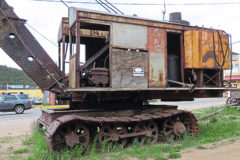
Previous Post
Rare Bucyrus tracked steam shovel discovered!

Next Post
Flagships of the Year award winners, 2022



